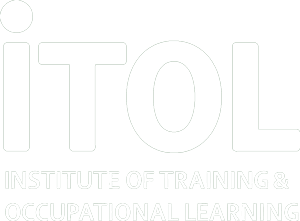It’s easy to calculate…
Mentoring is an important part of any business, it is a simple tool that has many benefits, one of which is the potential for a large return on investment.
What we are going to do in this post is tell you about the benefits of mentoring and how you can calculate your profits as a result of it.
Mentoring is a personal enhancement strategy that typically involves two people; a mentee who wishes to develop specific learning areas and a mentor who fulfills the role of expert for those wishing to learn.
Mentoring helps mentees to:
- Improve in a particular career area
- Learn more about the company
- Explore potentially unexplored areas of development
- Expand leadership abilities
- Make valuable contacts
- Increase technical skills
Mentoring allows mentors to:
- Share their expertise
- Prove themselves as leaders
- Expand professional network
- Obtain a fresh perspective
- Cement their role as an expert
THE BENEFITS
-
Employee retention
77% of companies report that mentoring programs were effective in increasing retention.
-
Productivity
88% increase in managerial productivity when mentoring was involved.
-
Promotion
75% of executives point to mentoring as playing a key role in their careers.
-
Personal and Professional Development
More than 60% of graduates listed mentoring as a criterion for selecting employer following graduation.
Return on Investment
Mentees:
ROI can be calculated through skill and knowledge development that directly impacts productivity.
Mentors:
ROI can be calculated through the sharing of knowledge and expertise.
Organisation:
ROI can be calculated through retention, attracting talent, saving on training and development costs, and creating a competitive work environment.
Measuring return on investment differs depending on your objectives, but you can use the following formulas to work out how effective your current mentoring efforts are.
Retention ROI
- Calculate the total cost required to implement and run a mentoring program.
- Determine the current level of spending associated with your ROI target: retention. To do so, you need to know the current cost to the company each time an employee leaves.
- Multiply the amount in “B” by the number of employees that leave the company each year.
- Subtract “A” (the original investment) from “C” (your turnover rate).
- Divide “D” by “A” and multiply by 100 to determine the ROI percentage.
Training ROI
- Calculate the total cost required to implement and run a mentoring program.
- Determine the current level of spending associated with your ROItarget: training. To do so, you need to know the current cost to the company each time an employee is trained via the traditional classroom method, including travel costs.
- Multiply the amount in “B” by the number of employees trained in a particular class each year.
- Subtract “A” (the original investment) from “C” (your traditional training costs).
- Divide “D” by “A” and multiply by 100 to determine the ROI percentage.
As you can see, mentoring is not an abstract process. It is a practice that invests in the employee and sees a profitable return. It is for this reason that huge companies such as General Electric and Intel focus on building proper mentoring programs, as investing in your staff is a step towards securing your financial future.



